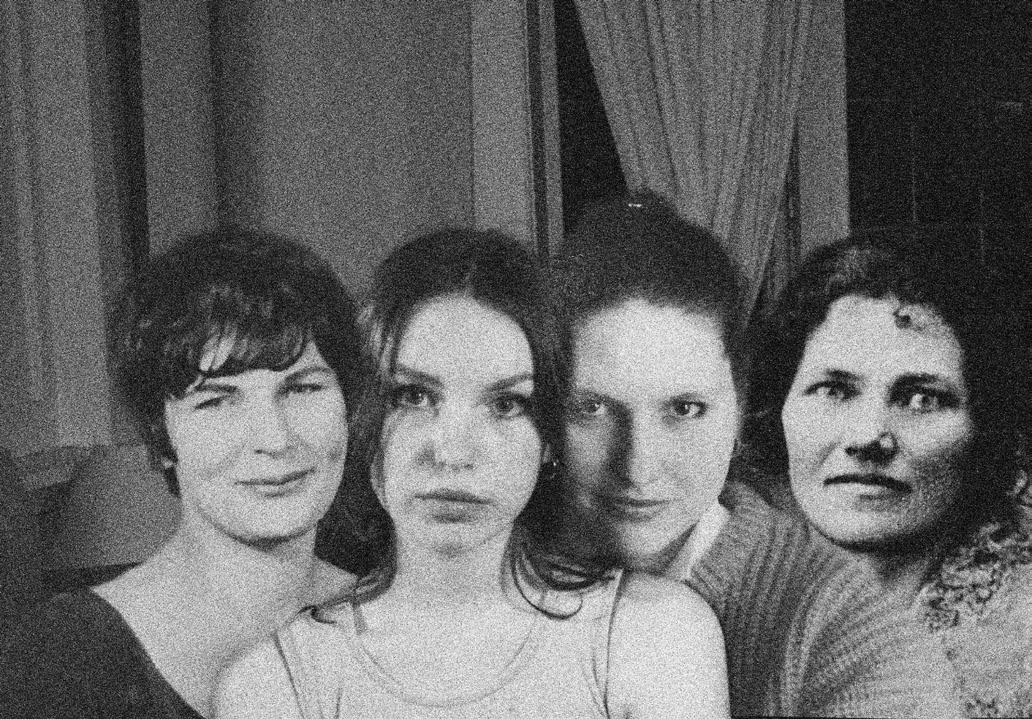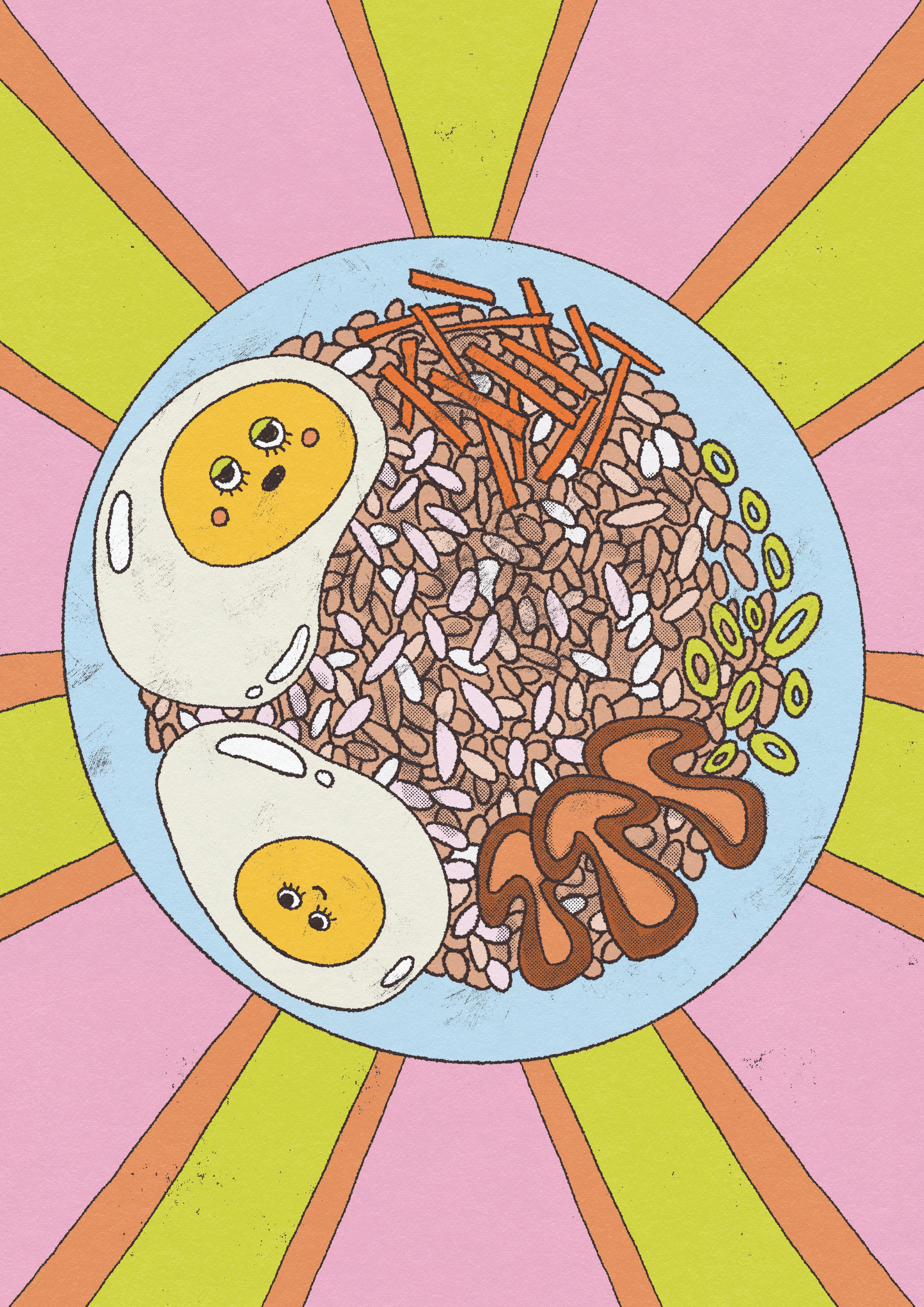
7 minute read
Delicate Survival Strength Alive In My DNA
from Issue 11 ✦ Diaspora
by Salient
Words by Francesca Franciszka Pietkiewicz (she/they) and Stefania Pietkiewicz (she/her)
CW: Labour Camps, War Related Death.
Being from a refugee background means you have survival mode built in.
When all systems fail, when your brain and body are bursting with emotion, each cell has been wired by your ancestors to problem-solve your way to safety. Even if that means everything has to fall before you get there.
Our bones are strong but hyper-sensitive, brittle but unbreakable. It sometimes feels like I’ve lived a thousand forevers with the number of times I’ve picked my life up from a pile of crumbs. Every time something goes wrong, there is a part of me, a DNA set defence mechanism, instantly ready to escape. A bittersweet superpower, it sometimes scares me the lengths at which my brain can defy me in order to keep my body alive. It’s the reason why, within my mental illness journey, I’ve always been deemed ‘high functioning’. There is a deep need in me to persevere and never break.
Unresolved trauma trickles down into future generations. This is our story.
-Franciszka
✦ ✦ ✦
I am the firstborn daughter of orphaned Polish war refugees. My parents were two of the 733 children invited to New Zealand by Labour Prime Minister Peter Fraser in 1944.
In 1944 there was no trauma-informed counselling available to refugees. They were expected to assimilate into New Zealand life. A 1967 NZ Film Unit documentary Story of Seven-Hundred Polish Children shows them as good New Zealand citizens, working, marrying, and making positive contributions to their communities and society. Outwardly, they were successful. And yet at night, my father had terrible nightmares and my mother saw devils. As a child I witnessed and yet could not understand the behaviours that would erupt. My mother shouting, “Bring my children back to the Land of the Living” — all those she lost haunting her waking with unspeakable memories.
As a child I would find quiet solace in the dark wardrobe, in being a high achiever at school, in the appearance of normalcy. I would become a lecturer at Victoria University of Wellington, and a communications strategist, a business owner, counsellor, and a mother… and yet in times of stress, I would encounter the ghosts of those children lost— depression, anxiety, neurodivergence, PTSD, and post-natal psychosis. I once wrote a university essay, while studying at VUW, in a loo in the Kirk Building. I couldn’t bear the crowded library. I would startle and sometimes hide at a knock at the door that banging at the door in the middle of the night decades before still so loud it made my nerves scream. “Be careful”was the same phrase I found myself saying to my children after my mother said it to me. So afraid she was of losing another one she loved. The unspoken trauma leaked into daily life.
- Stefania.
✦ ✦ ✦
My mother Stefania and I have a shared love for storytelling. We are the descendants of war refugees who passed on all of their strength, and their sorrow, to us.
Our task is to weave healing into words:
Hunted, Haunted, Hurt, Healed, Whole.
Lorraine Singh is a trauma-informed Child and Youth counsellor who offers psychotherapy to refugee background people as part of the Red Cross Trauma Recovery Service. I asked her if there was any science behind using art to release emotional pain. “Creativity can have a positive impact on emotional regulation and help alleviate stress by […] using colours, the senses and attention to detail to create something tangible to make sense of self or the world,” Lorraine explained. In my grandparents’ generation, there was no mental health support for refugees navigating their trauma, or the confrontational anxiety of starting again in a place where you don’t speak the language or fit in with the culture. Now, the support available to help refugees recover has improved. Mum and I are so grateful.
Displacement is embedded in my family line, huddled in the depths of our DNA through decades of discomfort. It’s led us down paths between determined drive toward a future, and dissociation to dismiss the hard truths. We remain relentlessly alive. We are confidence-crushed by events out of our control, and we forget to forgive ourselves when it’s not our fault. My ancestors took on each day, becoming friends with the fear that this one could be their last, and building adrenaline anxiety into our genetic code.
“Epigenetics […] shows how the environment influences children’s experiences and actually affects the expression of their genes. Young brains are particularly sensitive to epigenetic changes,” says Lorraine, confirming the impact of trauma on our bodies and genetic systems. Unfortunately, as much as we might want to, we can’t only pass down the good. Pain intertangles all of us. The body holds it.
My grandparents were young when they became war refugees. Their innocence drained to a drop, bodies broken down to skin and bone. Forcibly removed from their homes and into Siberian labour camps. Waiting, watching, as parents, siblings, and other loved ones were wrongfully taken right in front of their eyes. At age 9, my grandad had to parent his young siblings. Forced to be headstrong, his heart learnt to harden.
✦
✦ ✦
My father watched his father get shot on the platform where Russian soldiers were loading his family onto cattle trains bound for Siberia. On the journey there, his mother fell under the train, missing his outstretched hand as she raced to board the moving train carrying a pail of milk. He was 9 and left alone to care for and feed his 7-year-old sister and 2-year-old brother.
My mother was 9 when she arrived in New Zealand. By this time, she had witnessed the death of three of her siblings from illness and starvation in the Siberian forced labour camps. She had then watched her mother die of a gangrenous leg wound. Her father and eldest brother had left to join the Polish Army, and until the 50s were thought to have been lost.
✦ ✦ ✦
My grandmother had to be her own emotional support, with her mother, favourite sister, and brothers sickly snatched. None of their belongings to hold close and sentimental, left with only emotional baggage.
Finally, in 1944, a light shone upon them. Alongside 731 others, they were taken in to become the Polish children of Pahiatua. 56 years later, I was born half-Polish and given a Polish name, Franciszka Pietkiewicz. I am eligible for a Polish passport, but I’ve never been there. I have no real connection to Poland. My full-Polish mother and aunties don’t speak the language. My grandparents held it all in, too hurt to tell their children stories or teach their native tongue, except for the words to ‘Sto lat’: the Polish celebration song we sing each Christmas.
I’m grateful for Aotearoa. Pōneke has been my home, and has held me. Unlike my grandparents, I haven’t had to flee. But in 1944, society wasn’t equipped to protect us, and it’s still not. The memories haunted them in silence as they learned the language of this country’s colonisers and how, to their best ability, to blend in.
“Children learn by observing and learning stress responses from those closest to them. The environment children are exposed to since birth can have major impacts on them, for example, living with an adult who has been traumatised by war who cannot manage their own distress or anger. […] Intergenerational transmission [or intergenerational trauma] is a complicated topic,” says Lorraine.
✦ ✦ ✦
My parents’ early trauma wove itself into the genetic blueprint I inherited, and into the one I then passed on to my daughter and son. I was already an egg in the foetus of my mother as she was carried in her grandmother’s womb. It would take until the early 2000s and the work of Rachel Yehuda at Mount Sinai to confirm that intergenerational trauma is passed on through DNA—often becoming visibly acute in the second or third generation. The work of Peter Levine, Bessel van der Kolk, and Gabor Maté have also confirmed this hard gift. It is an inheritance which has bestowed immense gifts of creativity (our family are gifted writers, painters, artists) along with mental illness and adaptive neurodivergence. The psyche and the body held memories that had no way of being processed or integrated. Our eyes are trained to notice details, our bodies are hypervigilant and multi-sensory. Our intuition is an acute attention to all unseen and seen detail to ensure we survive. It would take till my late 40s before I could see, understand, and work with this.
✦ ✦ ✦
I was confronted by my disconnection from my ancestral home once again last year. I remembered Mum saying the part of Poland we were from was now Ukraine. Our last name meant Peter, Son of Kyiv. I suddenly realised my grandparents’ past had begun to repeat itself. Our home was being destroyed again, and this time, I was watching it happen over Instagram. Mum and I reconnected to our intergenerational grief through a TikTok account made for a cat called Stepan. We patiently waited for his posts, wondering whether he remained safe on his escape journey to France.
Refugee genes are built strong and sturdy, from walking miles barefoot in dire conditions. They have to bury their emotions to keep themselves safe. Post-traumatic stress mixes into one’s mindset, marinating a generational ripple of misunderstood mental distress.
My mother has never come out of hurt without new skills and lessons learnt. She taught me to never hold on too hard to hurt and to be open, calm, and caring. We must allow ourselves to openly express and let our ancestors hold us, knowing we can survive. Hurt passes, but we can look within and face it. What does it mean to dive into all the hurt and happiness, and reflectively appreciate it all in harmony, holding hands with all of our ancestry’s inner children?
✦ ✦
What has this hard inheritance gifted? Empathy, compassion, an extraordinary strength to overcome adversity, and a lifetime of helping others understand the unconscious and often inherited beliefs and behaviours that limit them. A desire for inclusivity of all kinds and an embrace of diversity… that I am so overjoyed to see is changing the world with my children’s generation. The liminal position of being a refugee gives you the ability to see the assumptions and expectations of the dominant culture in a different way. Healing underlying trauma can be the antidote that society needs. Our biodiversity and neurodiversity are our greatest hope for humanity’s continued survival. The more beautiful world, as Charles Eisenstein writes, requires all of us exactly as we are.









